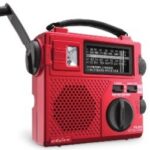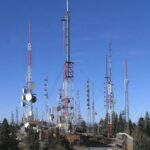The longwave radio band allows reception of a number of European broadcast stations, as well as some types of communications. It can be received on many shortwave and multiband radios sold in the United States, as well as some non-shortwave receivers available in Europe.
Longwave is located at a lower frequency than AM (a.k.a. mediumwave), ranging from about 150kHz to 550kHz. According to dxing.com, morse code navigation beacons and marine weather broadcasts are most likely to be received on this band, but it is sometimes possible for North Americans to receive foreign broadcast stations at night. It also states that longwave is heavily affected by electrical radio interference. Wikipedia.org indicates that part of the LW band is used for domestic and international broadcasting in Europe, Russia, and North Africa. It lists a number of longwave stations, many of them in Germany, Russia, and the United Kingdom, along with a few in Belarus, Algeria, Iceland, and other countries in the region.
Most longwave radio receivers available in the United States and Canada also receive shortwave, AM, and FM bands. Some examples of longwave-capable radios which have been sold in the United States include the Radio Shack DX-394 (digital), Realistic DX-350 (analog), and Sony ICF-2010 (digital). It generally costs at least $15 to purchase a radio with longwave capability; one of the least expensive options is the Coby CX-CB12, which can be bought on eBay.com for under $20 (including shipping and handling costs), and has been available at some U.S. stores from time to time.
Because of its use for domestic broadcasting band in parts of that region, some longwave radio receivers are sold in the European market which do not also receive shortwave, but may include AM or FM. Americans and Canadians can sometimes purchase these units over the internet, if they are willing to pay the high shipping costs. An occasional receiver which was taken with someone while travelling from Europe to North America may turn up as well. Some European car radios also receive the longwave band.
Overall, owning a radio with longwave capability is useful if you travel to regions where it is used for domestic broadcasting, if you want to attempt tuning in distant foreign broadcasts at night, or if you are interested in marine communications. More details on longwave radio listening, along with a message board on the subject, can be found at the website lwca.org.





